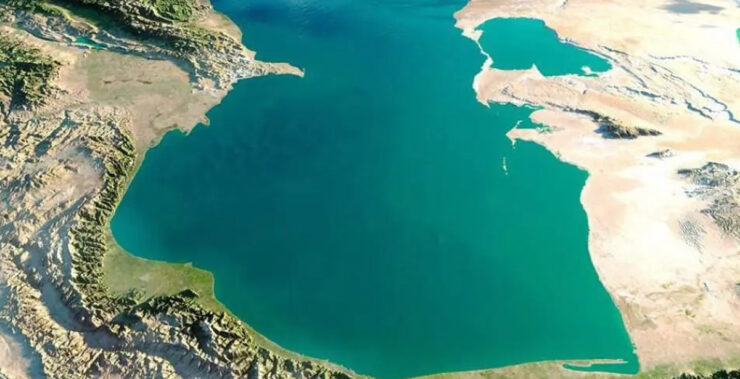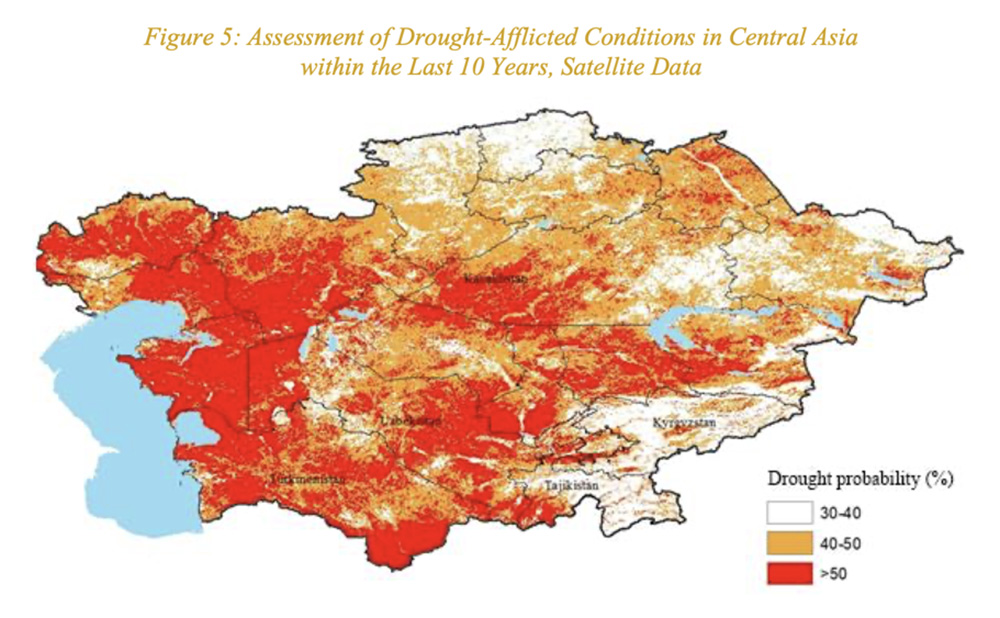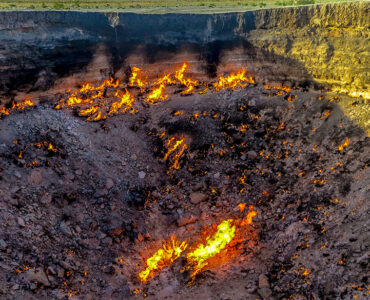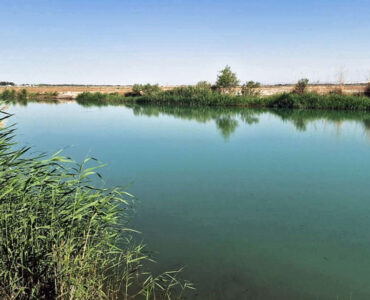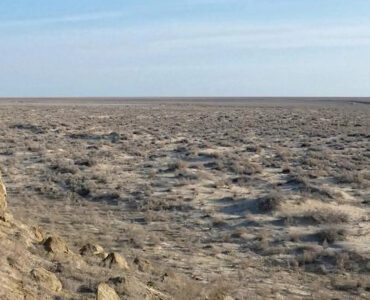As part of the Regional Approaches for Combating Sand and Dust Storms and Droughts project by the United Nations Convention to Combat Desertification (UNCCD), that took place between January 2020 and March 2023, a regional strategy for Drought Risk Management and Mitigation in Central Asia for 2021-2030 has been developed. The Regional Strategy lists measures that need to be taken to improve resilience in the face of droughts and water scarcity, by shifting from reactive to proactive approaches and regional cooperation.
More than 90% of the water used in Turkmenistan is for agriculture, with less than 10% of water consumed by industry and municipalities. Most of Turkmenistan has a high probability of droughts, with more than 50% of the area of the country having a 50% or higher drought probability. Droughts in the last few decades have already caused hundreds of millions USD of damages to crops and livestock. Their impact on population is also significant, with an estimated 752 thousand people in Turkmenistan living in drought “hot-spot” areas.
The strategy aims to account for Central Asia’s natural, climatic, and political features, and to increase cooperation in mitigating various climate change induced problems. This article summarizes the Regional Strategy and presents some of the facts.
Overview of the region
Most of the population in Central Asia lives in the Aral Sea basin. Agriculture is an important part of the regional economy with more than 50% of the population actively engaged in agriculture. The shares of different sectors range from country to country, and in Turkmenistan, the share of village farming in the GDP stood at 11%, services at 28.1%, and industry with 59% of the GDP in 2010.
As agriculture is the primary source of income for many in the region, droughts and low water availability pose a serious threat to their livelihoods. As of today, more than 90% of agricultural products come from irrigated agriculture, but the water consumption currently operates at only 50-60% efficiency rates, indicating misuse of fresh water that will cause issues with food security in the future. Turkmenistan and Uzbekistan are the largest water consumers in the region. More than 90% of the water used in Turkmenistan is for agriculture, with less than 10% of water consumed by industry and municipalities.
Types of droughts
Droughts are natural phenomena caused by different factors such as ocean temperature fluctuations, land temperature changes and others, but are increasingly caused by anthropogenic causes such as increased agriculture, increased pressure on water resources, and greenhouse gas emissions. The Regional Strategy distinguishes 3 main types of droughts:
- Meteorological, or when the precipitation in the region is significantly lower than expected;
- Agricultural, or when available water reserves cannot meet the needs of agriculture;
- Hydrological, or when surface and groundwater reserves are depleted due to a shortage of water in river basins.
Lack of information
Monitoring and Early Warning systems for droughts are of utmost importance. In recent years, the capacities of hydrometeorological services in the region have been enhanced with the help of international programs. As a result, the accuracy of river runoff and weather forecasts have been improved by 20-50% and 5-20%, respectively. Knowing about droughts in advance, and with the help of right policy instruments, the impacts of droughts can be mitigated. Nevertheless, the baseline information (such as heat and moisture exchange, evaporation from soil and water surface) required for drought monitoring and modeling is still not fully available in the region. The research on climate variability and formation of extreme weather events in Central Asia is not sufficiently developed, so there is a need for studies on drought dynamics and a development of a common regional drought index system.
However, some assessments have been done, and according to the results, almost 30% of Central Asia falls under the zone with more than 50% drought probability. As seen on the graph below, South and West are especially prone to droughts. Most of Turkmenistan has a high probability of droughts, with 10% of the area having 30-40% drought probability, another 22.8% of the area having 40-50% drought probability, and 55.1% of the area of the country with a drought probability of 50% and more. Turkmenistan cultivates vast irrigated lands and depends on external water resources, making the country especially vulnerable to extreme weather events.
Source: UNCCD, 2021
Impacts of droughts
Droughts are frequent in Central Asia, but they are rarely registered officially, with only 2-3% of all registered disasters in the region currently attributed to droughts. However, the economic losses due to droughts are huge. In Turkmenistan, for example, severe droughts in 2000-2001, 2005-2006, and 2008 led to a significant reduction in the grassland yield and, consequently, in the number of livestock. In dry years, shepherds had to sell 10-40% of their sheep, goats, and camels. Parts of Central Asia have also been traditionally used as rangeland, but with more frequent droughts, the vegetation is not productive enough.
In Turkmenistan, for example, long droughts in 1997-2007 reduced the pasture performance by 35-45 kg/ha, or by 22-34%. Considering the importance of sheep breeding in Central Asia, including Turkmenistan, where there were almost 18 million sheep and goats, in addition to almost 2 million cattle, 0.13 million camels and 0.15 million horses, as of 2018, droughts can have a devastating impact on the economy.
Crop yields are also damaged by droughts. For example, in 2001 direct economic damages to crops in Turkmenistan estimated to be about 140 million USD, which is the value of products that were under-received. Furthermore, droughts may increase soil salinization process, further leading to the loss of land productivity and desertification. Some countries have significantly more saline areas, with around 1.6 million hectares of saline area in Turkmenistan.
Populations are also severely affected and are vulnerable to droughts. The “hot spots”, or areas with a population density of more than 25 people per km2 and areas with high drought probability, are home to 752 thousand people in Turkmenistan, and almost 12 million people in Central Asia. Women, elderly population, and children are especially vulnerable groups, whose awareness and knowledge should be prioritized as one of the adaptation strategies.
Finally, natural ecosystems and biodiversity are threatened by climate change and droughts. Changes in climate and seasons will have a negative impact on vegetation productivity and will increase the wildfires, affect animal and plant habitats, and structure of local mountain forests.
Current measures
The nations of the region have joined multiple international conventions, including the United Nations Convention to Combat Desertification (UNCCD). Turkmenistan ratified the convention in 1996, only 2 years after it was adopted. The countries are also engaged in meteorological data exchange agreements within the WMO Sand and Dust Storm Project, the Sendai Framework, and the project of the Concept of Hydrometeorological Security of the CIS member countries. However, any regional drought management strategy will depend on more collaboration and willingness to share meteorological data between the Central Asian nations and increased transparency.
Additionally, Central Asian nations are already taking some measures to adapt and mitigate droughts, such as upgrading their irrigation systems, forest restoration and afforestation, providing subsidies for purchasing more energy and water efficient equipment, and others. However, more proactive measures still need to be taken by all 5 nations.
Mitigation and Adaptation Measures
The Strategy recommends prioritization of the following 4 areas:
- Building the Monitoring, Risk Assessment, and Drought Prevention Capacities. Upgrading capabilities of national hydrometeorological services and new methods to monitor and forecast droughts are needed for the whole region, and data sharing has to be established among the countries, but also within various stakeholders within each country. Monitoring the direct and indirect impacts from droughts and water shortages should also be established.
- Drought Mitigation, Development of Plans to Address Water Scarcity and Data Dissemination. Introduction of high-yield, salt-, drought-, and frost-resistant varieties of crops is an efficient and effective way to increase productivity of saline land. Additionally, water-saving irrigation technologies should be introduced and promoted. Farmers and agricultural producers should be provided with meteorological and climate data and be educated on new agricultural practices.
- Capacity Building and Awareness Raising among the rural population (including vulnerable groups) on climate change adaptation and efficient farming practices. Activities aimed at raising awareness on actions that can help to combat desertification and land degradation should be organized.
- Regional Cooperation between the countries is critical, especially considering that the issue is transboundary. Joint actions on managing extreme natural events and effects of climate change are important for the stability in the region.
Finally, the Regional Strategy is suggested to be integrated in the Regional Environment Programme for Sustainable Development in Central Asia (REP4SD-CA). This program is established by the Interstate Commission on Sustainable Development in 2019 for 2021-2030 and aims to enhance regional cooperation for environmental protection.

